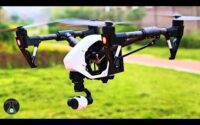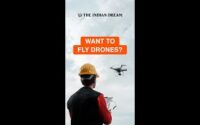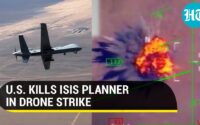The Evolution of Drones in Industries
The Rise of Drones and the Wright Brothers’ Legacy
The invention of drones has revolutionized various industries, thanks to the pioneering efforts of the Wright Brothers. – The Wright Brothers’ legacy in aviation paved the way for the development of modern unmanned aerial vehicles, commonly known as drones. – Their innovation and perseverance in achieving controlled flight laid the foundation for the technological advancements we witness today. – Drones, equipped with advanced sensors and cameras, have transformed fields like aerial photography, filmmaking, agriculture, and even search and rescue operations. – These versatile devices enable us to capture breathtaking aerial shots and gather valuable data from remote areas with ease. – The Wright Brothers’ commitment to exploring the possibilities of flight has had a profound impact on the evolution of drones. – With their relentless pursuit of innovation, the Wright Brothers’ legacy lives on in the realm of unmanned aviation. – Drones have also found applications in commercial delivery services, enabling efficient and timely transportation of goods. – Additionally, they have revolutionized the way we monitor and inspect infrastructure, such as bridges, power lines, and pipelines. – The accessibility and affordability of drones have made them popular among hobbyists and enthusiasts, allowing individuals to explore the skies and capture stunning imagery. – Furthermore, drones are being utilized in environmental conservation efforts, providing valuable data on wildlife populations, deforestation, and climate change. – As the technology continues to advance, we can expect drones to play an increasingly significant role in various sectors. – The Wright Brothers’ spirit of exploration and their determination to conquer the skies continue to inspire the drone industry’s growth. – Their legacy serves as a reminder of the boundless potential of human ingenuity and the impact it can have on shaping our world. – In conclusion, the rise of drones stands as a testament to the lasting influence of the Wright Brothers’ pioneering work in aviation.
The Wright Brothers: The Pioneers of Aviation
The Wright Brothers, Orville and Wilbur, were American inventors, engineers, and aviation pioneers. They are credited with inventing and building the world’s first successful airplane. Their breakthrough in aviation history revolutionized the way we travel and laid the foundation for modern aircraft.
One of the key contributions of the Wright Brothers was their understanding of aerodynamics. They conducted numerous experiments, studying the principles of lift, drag, and control, which led them to develop a three-axis control system. This system, consisting of wing warping, a movable rudder, and an elevator, allowed pilots to maintain stability and control during flight.
Their relentless pursuit of flight also included the development of a wind tunnel, which enabled them to test their theories and designs scientifically. Through their meticulous testing and analysis, they were able to refine their aircraft designs and improve their understanding of flight dynamics.
, the Wright Brothers achieved their ultimate goal: powered, controlled, and sustained flight. Their aircraft, the Wright Flyer,-second flight at Kitty Hawk, North Carolina. This groundbreaking achievement marked the birth of aviation and paved the way for the rapid advancement of aircraft technology.
While the Wright Brothers’ accomplishments were focused on manned flight, their legacy extends to the realm of unmanned aerial vehicles (UAVs) as well. Drones, a modern-day innovation, share some similarities with the principles of flight that the Wright Brothers pioneered.
Just as the Wright Brothers emphasized control and stability, drones also rely on sophisticated control systems to navigate through the air. The principles of lift, drag, and control that the Wright Brothers studied over a century ago still form the basis for the flight dynamics of drones today.
Furthermore, the Wright Brothers’ unwavering dedication to innovation and experimentation serves as an inspiration for drone technology. Like the Wright Brothers, engineers and designers continue to push the boundaries of what drones can achieve, exploring new applications in various industries, including photography, videography, delivery services, and even humanitarian aid.
From Aviation to Drones: The Modern-Day Revolution
In the past century, aviation has undergone a remarkable transformation – a revolution driven by technology. However, it is the emergence of drones that has truly taken this revolution to new heights.
Drones, also known as unmanned aerial vehicles (UAVs), have rapidly gained popularity in recent years. Their versatility and adaptability make them suitable for various industries, including photography, agriculture, logistics, and even emergency services.
One of the key pioneers in the field of drones is the Wright brothers. Known for their groundbreaking achievements in aviation, they laid the foundation for modern-day unmanned flight. Their innovation and persistence paved the way for the development of drones as we know them today.
Drones have brought about a multitude of advantages. They can access hard-to-reach locations, gather crucial data, and perform tasks that are dangerous for humans. With advanced sensors and cameras, they provide valuable insights and improve efficiency in many sectors.
Drones have revolutionized aerial photography, enabling breathtaking shots from unique perspectives. They have become an essential tool for filmmakers, real estate agents, and outdoor enthusiasts. The ability to capture stunning visuals has never been easier.
Furthermore, drones have transformed agriculture. With their high-resolution imaging capabilities, farmers can monitor crops, assess soil conditions, and detect potential issues. This data-driven approach allows for precision farming, optimizing resources and maximizing yields.
Logistics is another area benefiting from drone technology. Delivery companies are exploring the use of drones for quick and efficient package transportation, particularly in remote areas or congested urban environments. Drones offer speed and agility, reducing delivery times and costs.
Even in emergency situations, drones play a vital role. They can assess disaster-stricken areas, search for survivors, and deliver essential supplies. Their ability to navigate challenging environments, such as collapsed buildings or inaccessible terrains, makes them invaluable in rescue missions.
Nevertheless, challenges remain. Regulations and safety concerns need to be addressed to ensure responsible and secure drone operations. Privacy issues and airspace management are also key considerations as drones become more prevalent.
The Versatility and Applications of Drones
Drones, also known as unmanned aerial vehicles (UAVs), have revolutionized various industries, including transportation, agriculture, and photography. These versatile machines have become indispensable tools for a wide range of applications.
One of the primary applications of drones is in the field of photography and videography. With their ability to capture stunning aerial shots, drones have transformed the way we document events, capture landscapes, and even create cinematic footage. The ability to maneuver in the air and capture unique perspectives has made drones a game-changer in the world of visual storytelling.
In the agricultural sector, drones have proven to be valuable assets. Equipped with advanced sensors and imaging technology, they can monitor crop health, detect pests and diseases, and optimize irrigation. Drones provide farmers with real-time data, enabling them to make informed decisions, improve crop yields, and reduce the use of chemicals.
Drones have also found applications in transportation and delivery services. Companies like Amazon and DHL are exploring the use of drones for package delivery, aiming to reduce delivery times and costs. Drones can navigate through congested areas more efficiently and reach remote locations, making them ideal for urgent deliveries and reaching inaccessible areas during natural disasters.
Another emerging application of drones is in infrastructure inspection and maintenance. Drones equipped with high-resolution cameras and thermal imaging sensors can survey bridges, power lines, and buildings, detecting structural weaknesses and identifying maintenance needs. This not only improves safety but also reduces costs and minimizes the risk for human inspectors.
Furthermore, drones have proven to be effective tools in search and rescue operations. Equipped with thermal cameras and GPS technology, drones can quickly locate missing persons in remote or hazardous areas. They can cover large areas in a short amount of time, providing valuable information to rescue teams and increasing the chances of a successful rescue.
The Future of Drones: Opportunities and Challenges
Drones, also known as unmanned aerial vehicles (UAVs), have emerged as a transformative technology with vast potential in various industries. The possibilities they offer are boundless, but they also come with their fair share of challenges.
Opportunities:
-
Delivery Services: Drones have the potential to revolutionize the delivery industry by providing faster and more efficient delivery options for small packages and medical supplies.
-
Aerial Photography and Videography: Drones equipped with high-resolution cameras offer new perspectives for aerial photography and videography, enabling stunning visuals for cinematography, real estate, and surveillance purposes.
-
Infrastructure Inspection: Drones can be used to inspect infrastructure, such as bridges, power lines, and pipelines, eliminating the need for manual inspections and reducing costs and risks.
-
Agriculture and Crop Monitoring: Drones equipped with sensors can monitor crop health, detect pests, and optimize irrigation, leading to increased yields and reduced environmental impact.
-
Search and Rescue Operations: Drones equipped with thermal imaging and other sensors can aid in locating missing persons or survivors in disaster-stricken areas, potentially saving lives.
Challenges:
-
Safety and Privacy: The increasing use of drones raises concerns about safety and privacy issues. Regulations and technological advancements are needed to ensure safe operations and protect individuals’ privacy.
-
Airspace Management: As drone usage increases, managing airspace becomes crucial to prevent collisions with other aircraft. Developing effective systems for airspace integration is a significant challenge.
-
Battery Life and Range: Drone flights are limited by battery life and range, hindering their ability to perform long-duration tasks. Advancements in battery technology are essential to overcome this limitation.
-
Legal and Regulatory Framework: Establishing comprehensive and flexible regulations for drone operations is necessary to ensure responsible and lawful use while fostering innovation and economic growth.
-
Public Acceptance: Gaining public acceptance for drones is crucial. Addressing concerns related to noise pollution, invasion of privacy, and potential misuse is vital for their widespread adoption.



